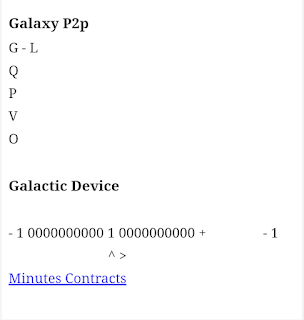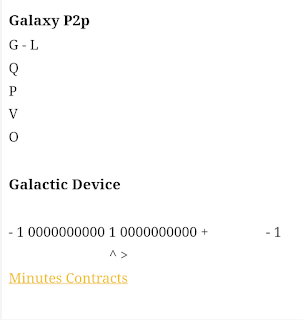Showing posts with the label xauusdShow all
Quantum Atmospheric Watch https://ift.tt/sdWSmxw Quantum Watch Simulation Quantum Watch Simulation Nitrogen Quantum CPU Nitrogen Quantum CPU Adjust Distance (Feet): 1 Feet Simulate Communication January 27, 2025 at 04:01PM
Monday, January 27, 2025
xauusd
from Z1 Capital https://ift.tt/rdZptRH via IFTTT
Black Hole Generator Simulation https://ift.tt/qsN5O04 Black Hole Generator Simulation Toggle Laser Toggle Black Hole Toggle Quantum Engine Laser Power (Tesla): 10 T Temperature: 1000K January 14, 2025 at 09:05AM
Tuesday, January 14, 2025
xauusd
from Z1 Capital https://ift.tt/2gc9Hsk via IFTTT
Gold $2,640
Wednesday, November 27, 2024
xauusd
Gold $2,640 Trading gold can be a lucrative investment strategy, but it also comes with risks. Here's a brief guide on how you can trade gold: …
📈 Gold Price Update: $2457.54
Thursday, August 15, 2024
xauusd
📈 Gold Price Update: $2457.54! High: $2479 Low: $2432 Gold is showing dynamic movement. Stay informed with the latest updates and expert analysis. …
Funding
$0.00

Galactic Legal
Recent Posts
Recent Posts
Loading recent posts...
Signup
System
Disconnected
Power
Off
Selective
Off
Privacy
Off
Gates
Popular Posts

Advanced Machine Learning
Saturday, June 14, 2025

Orbital Elevator
Saturday, June 07, 2025

The Watchers of the Messiah
Saturday, August 09, 2025
- Live Channel
- Land
- Loans
- Debit
- Wallpaper
- Live Chart
- Invest Contract
- Dragon Tail Strategy
- Dragon Trading Strategy
- Holdings
- Finance
- Active Holdings
- About
- Funding
- 8137384283
- (813)-738-4283
- Signup
- Profit Calculator
- Stock Calculator
- Buy Bitcoin
- Code Breaker
- Light Hours
- RGB
- Capsule Corp
- RGB Cards
- RGB Time Cards
- Galactic Time Device
- Buy Gold
- Instant Gold
- Invest Gold
- Gold Api
- Gold Ledger
- Gold Interest
- Heatmap
- News
- Galactic Constant
- G · C° Ai
- [ Gf< > Af + ~ - 3100 · < > + ~ -18bNe]
- [G·C° ~ C2c > 8bNe ^100 <(ThzR)> c2C~ C·G°]
- Gf · Af × = E°
- Af + ~ + 3100 145 1961 1945 1942 1932 ~ < - 18bNe]
- Quantadecimal
- Privacy Ai
- Interactive Viewer
- Solar Entangled Reactor Device
- Solar Entangled Module
- [Gf < 3100 1981 > -18bNe] Notes
- Wireless Power
- Magnet Speaker
- Quantum Speaker
- Active Coms Earth
- Galactic Active Coms
- Quantum Position
- Quantum Prison
- Galactic Satellite
- Gz1 Ai
- Gz1
- PzR1
- PzC1
- PzCR1
- PzR2
- Quantum Entangled Power Device
- Power Suit
- 24
- 32
- 45
- 100000
- 24,901
- 24901 E
- Intelligent Factor
- Communicator
- Galactic Satellite Ai
- Galactic Military
- Future Past Present
- Z Force
- Mobile Suit
- Photonic Scanner
- Quantum Well
- VS
- Qubit
- Interactive Coordinates
- Quantum Locking
- Quantum Levitation
- Space Time
- Total Distance
- Quantum Dimension
- Galactic Viewer
- Galactic Viewer Sat
- Galactic Viewer Earth
- Galactic Viewer Quantum Well
- Galactic Viewer Particles
- Galactic Viewer Nuclear
- Galactic Particle Accelerator
- Galactic Quantum Particle Accelerator
- Galactic Viewer Solar System
- Particle Accelerator
- Galactic Solar System
- Galactic Viewer Levitation
- Galactic Quantum Levitation
- Galactic Space Time
- Quantum Prison z
- Galactic Viewer Universe
- Cards
- Dashboard
- Atmospheric Generator
- Galactic Spacecraft
- Particle Accelerator Td
- Electrons Proton Neutron
- Quantum Graviton Photonic Model
- Neutron
- Neutron b
- Fission
- Fusion
- Neutron B
- GcQ = E
- Particle Engine
- Particle Engine Rm
- Particle Engine RmS
- Particle Printer
- Particle Molecule Deposition
- UaO
- Orbital Rotation
- Galactic Dynamic
- 10^
- Volts Amps Watts
- Jobs
- 57
- 63
- Population
- Candles
- Moving Averages
- Molecular Deposition
- Atmosphere Spacecraft
- Atmosphere Collector Spacecraft
- Atmosphere Spacecraft V2
- Atmosphere Spacecraft V3







